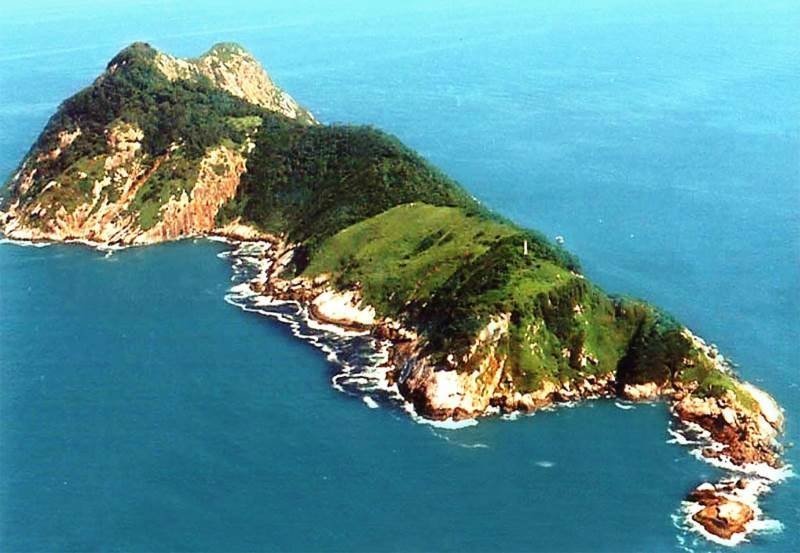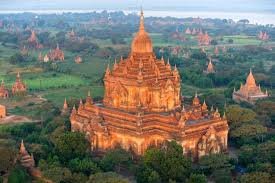Fukushima Exclusion Zone, Japan: A Legacy of Nuclear Disaster
The Fukushima Exclusion Zone in Japan is a place where nature and man-made disaster intersect. Located around the Fukushima Daiichi Nuclear Power Plant, this area became infamous after the catastrophic nuclear accident in March 2011, which has since been known as one of the worst nuclear disasters in history. This article delves into the history, impact, and ongoing challenges of the Fukushima Exclusion Zone, as well as its hauntingly abandoned towns and villages.
The Fukushima Disaster: A Turning Point in History
On March 11, 2011, a massive 9.0 magnitude earthquake struck off the northeastern coast of Japan. The earthquake triggered a devastating tsunami that flooded the Fukushima Daiichi Nuclear Power Plant, causing it to lose power and initiating a meltdown of three reactors. The disaster led to the release of significant amounts of radioactive material into the environment, forcing the Japanese government to evacuate people from the surrounding area to minimize exposure to dangerous radiation.
The Fukushima Exclusion Zone was established to keep residents and outsiders away from the contaminated areas. It spans a radius of about 20 kilometers (12.5 miles) from the Fukushima Daiichi plant, although radioactive contamination extended beyond that. The exclusion zone was initially set up as a temporary measure but has lasted for years due to the ongoing environmental and health risks posed by radiation.
Affected Areas and Evacuations
The Fukushima Exclusion Zone affected several towns and villages in Fukushima Prefecture, including the following:
- Futaba: Home to the Fukushima Daiichi Nuclear Power Plant, Futaba was completely evacuated, and it remains largely abandoned. The town is eerily silent, with houses, schools, and businesses left in ruins.
- Namie: Namie was another town affected by high levels of radiation. It was evacuated in the aftermath of the disaster, and while efforts have been made to decontaminate parts of the area, much of the town remains uninhabitable.
- Iwaki: Located outside the exclusion zone but still affected by the fallout, Iwaki experienced radiation levels higher than usual. However, it was not part of the mandatory evacuation zone.
- Tomioka: This town was heavily impacted by radiation, and most of its residents had to evacuate. However, some parts of Tomioka have begun to see residents returning, although the area remains heavily restricted.
- Minamisoma: Like Iwaki, Minamisoma was outside the core exclusion zone but still suffered from radiation contamination. It has since been reopened, but it still faces challenges regarding the return of displaced citizens.
These areas were devastated not only by the direct effects of the earthquake and tsunami but also by the lasting impact of radiation, which made it unsafe for people to return for years.
Radiation and Its Impact
The primary concern that led to the creation of the Fukushima Exclusion Zone was the release of radioactive isotopes such as cesium-137, iodine-131, and strontium-90. These radioactive materials posed a significant health risk to people who were exposed to them for prolonged periods. Radiation sickness, increased cancer risks, and genetic mutations were some of the potential health issues.
Although the radioactive materials released from the Fukushima Daiichi plant were less intense than those from Chernobyl, the proximity of the disaster to densely populated areas made it a unique challenge. The Japanese government initially evacuated people within a 20 km (12.5 miles) radius, and those who were exposed to high radiation levels were relocated to safer areas.
Long-term contamination of the soil, water, and air meant that the area remained hazardous for many years. Even today, some parts of the Fukushima Exclusion Zone still carry radiation levels higher than what is considered safe for human habitation.
Abandoned Towns: A Hauntingly Silent Legacy
One of the most striking aspects of the Fukushima Exclusion Zone is the presence of abandoned towns. After the evacuation orders, entire communities were left behind in haste. Houses were abandoned with personal belongings still inside, businesses closed overnight, and schools sat empty.
- Futaba and Namie stand out as symbols of this ghostly landscape. Abandoned vehicles line the streets, houses show signs of decay, and nature has begun to take over as time marches on. The contrast between the man-made structures and the encroaching wilderness creates an eerie atmosphere.
- The Tomioka and Naraha towns are also among the most recognizable. The eerie silence in these places speaks to the irreversible impact of the disaster and the lives that were disrupted.
In many of these towns, nature is slowly reclaiming the land. Overgrown plants, trees, and wild animals have started to take root in the once-bustling communities. This apocalyptic scene is a chilling reminder of how human existence can be disrupted by natural disasters and technological failures.
Efforts to Decontaminate the Area
Efforts to clean up the Fukushima Exclusion Zone and restore the affected regions have been ongoing for years. The Japanese government and international organizations have been working tirelessly to remove radioactive debris, treat contaminated water, and decontaminate buildings and infrastructure.
Decontamination efforts have focused on the removal of radioactive topsoil, cleaning up contaminated homes and buildings, and reducing radiation levels to acceptable limits. However, due to the nature of radiation, full decontamination of the area is expected to take decades, and some areas may never be habitable again.
While some regions of Fukushima have been opened for controlled re-entry, large parts of the exclusion zone remain off-limits to the public due to persistent high radiation levels. The question of whether people will ever be able to return to their homes is still uncertain, and the long-term health effects on evacuees are still being studied.
Fukushima Exclusion Zone as a Tourist Destination
Despite the risks, the Fukushima Exclusion Zone has become a curious destination for dark tourism. Some adventurous travelers visit the abandoned towns and radiation-affected areas, guided by local experts who ensure that visitors stay within safe zones.
The area also attracts those with an interest in post-apocalyptic settings, as the abandoned towns provide a glimpse into a world where nature and decay have overtaken human civilization. However, this form of tourism has sparked ethical debates, with critics questioning whether it is appropriate to treat such a tragic and dangerous place as an attraction.
Fukushima’s Ongoing Recovery
The disaster at Fukushima, while devastating, has sparked significant changes in Japan’s energy policies, as well as in how the country deals with nuclear safety. Japan has reevaluated its reliance on nuclear power, and efforts have been made to improve safety standards for nuclear plants across the country.
The recovery process for the Fukushima Exclusion Zone is a long one, and while some towns may eventually be repopulated, the legacy of the disaster will persist. The lives of the people who once lived in this region will always be tied to the tragedy, and the abandoned towns will serve as reminders of both human resilience and the catastrophic consequences of technological failures.
Conclusion
The Fukushima Exclusion Zone stands as a somber reminder of the devastating impact of nuclear disasters. While the area remains uninhabitable due to the radioactive contamination, it has also become a symbol of both human vulnerability and resilience. The journey toward healing and recovery is still ongoing, and it may take many more years before the full extent of the disaster can be understood. In the meantime, the Fukushima Exclusion Zone serves as a lesson in the importance of nuclear safety, environmental responsibility, and the unforeseen consequences of technological advancement.
4o mini


